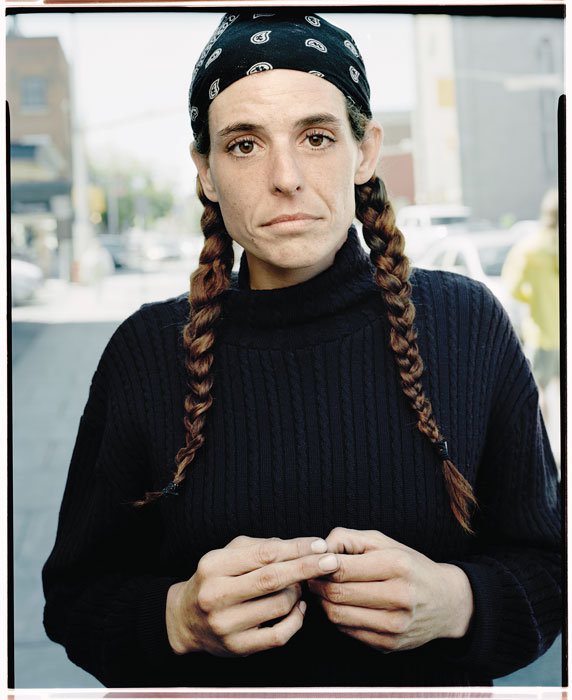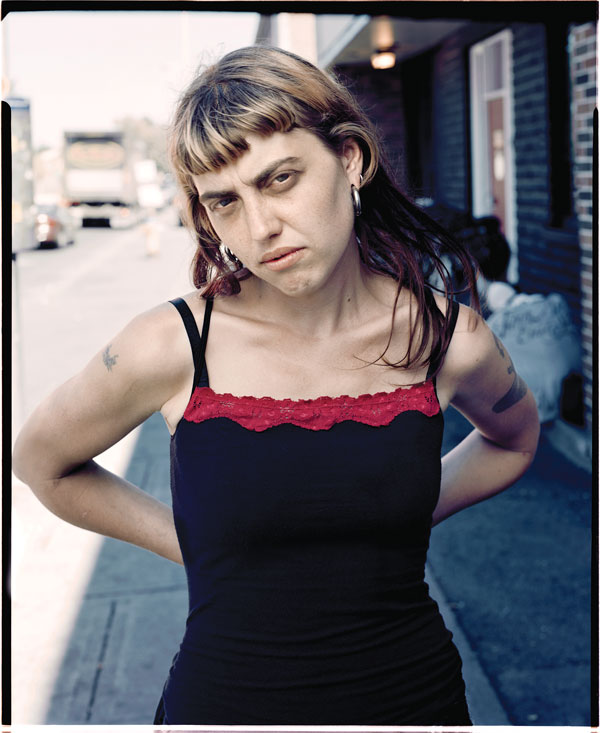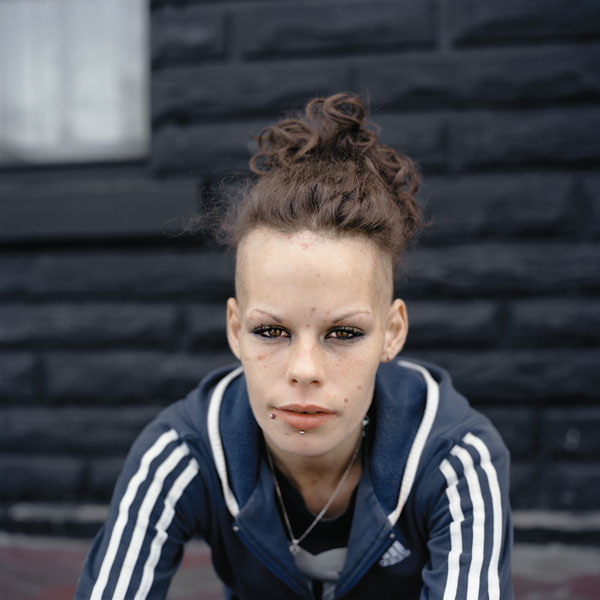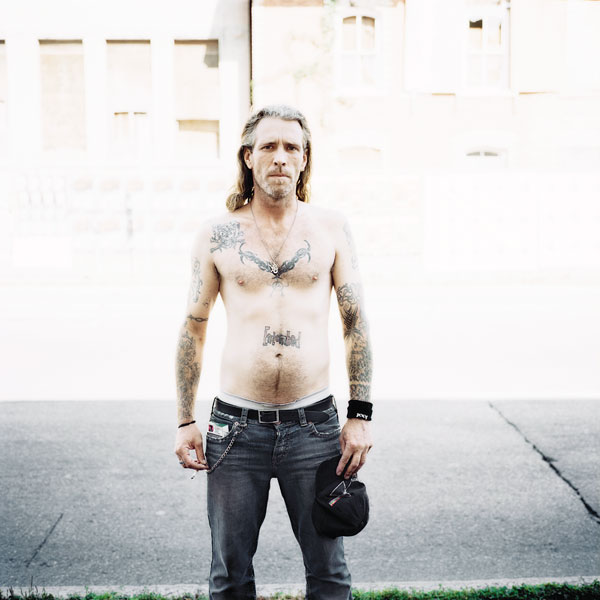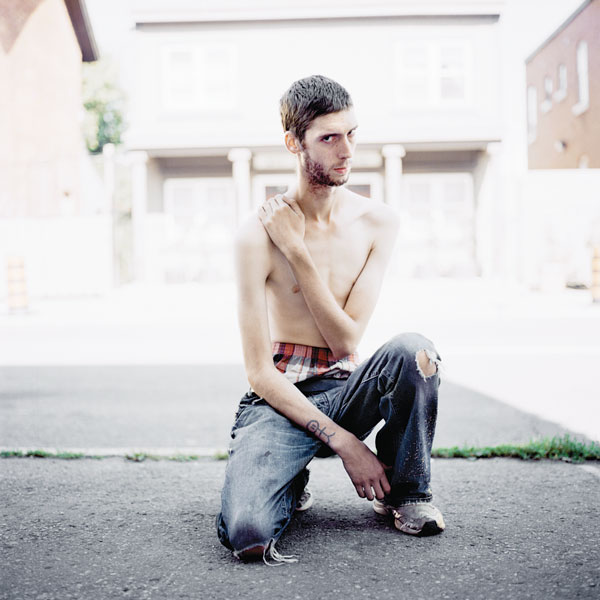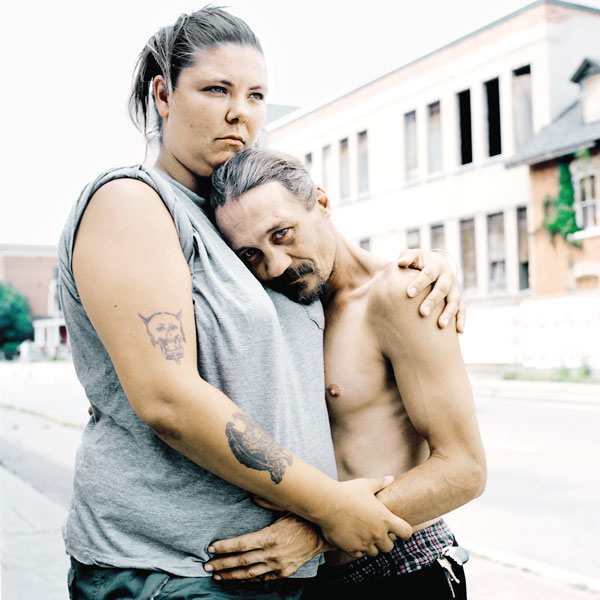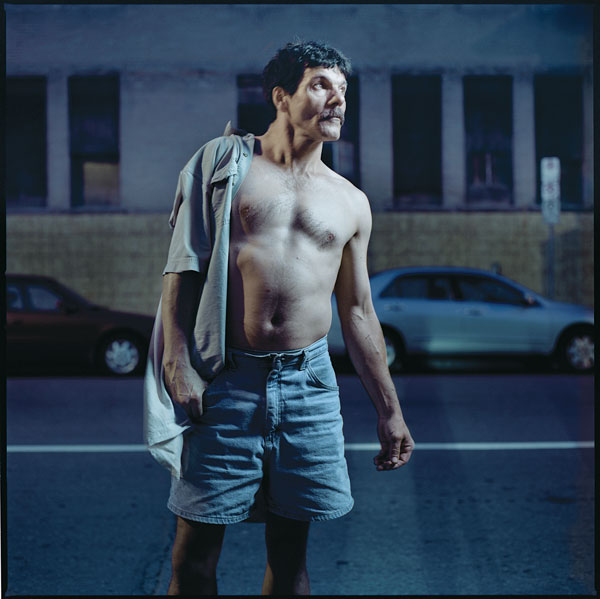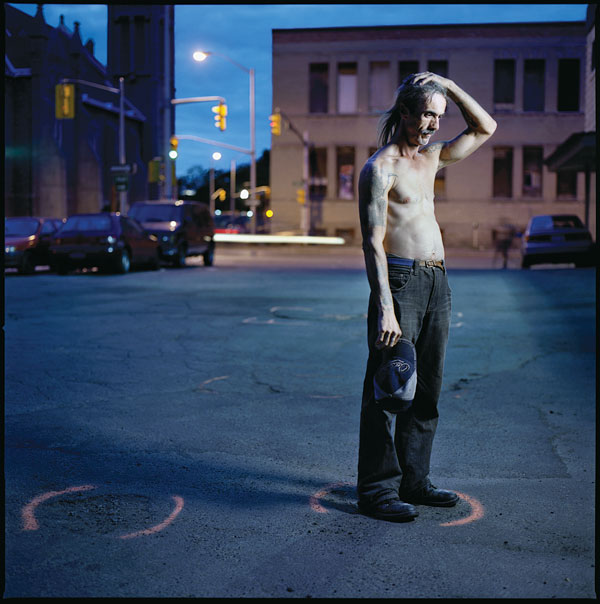[Spring/Summer 2011]
Tony Fouhse’s photographic project User (2007–10) has had its fair share of outraged detractors and enthusiastic proponents. A series of portraits taken over a four-year period, the project revolves around a community of crack addicts who congregate on a particular street corner in Ottawa’s Lowertown, a stone’s throw from the Byward Market, one of the city’s most popular tourist areas. The addicts’ presence in the neighbourhood is often decried as both a menace and an eyesore.
The pressure placed upon contemporary artists to produce socially critical, politically engaged works of art is both enormous and confusing. On the one hand, galleries and other visual-arts organizations expect artists to mobilize the population via certain “artistic strategies,” such as subverting cherished yet secretly oppressive idols or breaking out of traditional exhibition formats to create new social practices and relationships. On the other, these same organizations shrink away from artists whose work actually challenges or threatens social institutions and hierarchies that are dominated by notions of professionalism and excellence. In this impossible situation, socially en-gaged artists are often caught in a tug-of-war between conservative forces that attack their work as “immoral” or “obscene” and liberal cultural industries bent on marketing it as “edgy” or “humanitarian.” Ironically, these extremes share a similar presupposition – that a work of art is a service to the community inasmuch as it shows us right from wrong.
Tony Fouhse’s photographic project User (2007–10) has had its fair share of outraged detractors and enthusiastic proponents. A series of portraits taken over a four-year period, the project revolves around a community of crack addicts who congregate on a particular street corner in Ottawa’s Lowertown, a stone’s throw from the Byward Market, one of the city’s most popular tourist areas. The addicts’ presence in the neighbourhood is often decried as both a menace and an eyesore. Despite this anxiety, opposition to safe-injection sites and crack-pipe programs remains pervasive throughout the city, but particularly in suburban areas. User began when Fouhse, a commercial photographer who typically shoots independent art projects while travelling, was forced by circumstance to find subject matter closer to home. As the story goes, he was on the Lowertown corner with his camera one evening when Archie, a local heroin addict, approached him and asked, “Are you looking for a subject?” This is exactly what Fouhse was looking for, and User was born.1
Contrary to what is sometimes assumed about this project, User required the lucid participation of the addicts whom it depicts. Shot with medium- and large-format cameras, these images are the result of careful planning and the subjects’ active participation. It is worth noting how difficult concentration and stillness are for crack users looking to get high. The earliest portraits in this series, taken at dusk, are, in many respects, the most provocative. Hovering eerily between spontaneity and contrivance, the dramatic atmosphere of these images is heightened by the addicts’ vaguely exaggerated poses. Yvon (2007), for example, shows a half-dressed addict standing in a parking lot, seemingly lost in thought, or possibly having a sudden realization. The pensive vulnerability of his expression, coupled with the striking contrast of natural and artificial light, creates pathos reminiscent of Baroque painting.
She looks directly into the camera, her expression guarded but not uninviting. Nothing about this image says that she is a crack user. Indeed, most of the women in these portraits could be anyone.
When Fouhse first exhibited this body of work at La Petite Mort Gallery in Ottawa, there was widespread moral outrage, and even hate mail. Rumours spread that he was giving the addicts money for drugs and thus exploiting them selfishly for the benefit of his artistic career. In fact, Fouhse is profoundly involved in this community on a personal level. All of the people in the portraits are acquaintances, and some, like Stephanie, are his close friends.2 Everyone who was photographed helped to compose his or her image, had final approval over it, and was given a copy. The fact remains, however, that Fouhse’s involvement on the corner is not wholly disinterested. As the title of this body of work announces, he is using this community for his own benefit. And while he admits this openly, he is also quick to point out that they are using him – as a conduit for their own agendas, a means of self-realization, and a way to convey messages about their identities, lives, and relationships to an audience that would otherwise ignore them. Finally, the project’s biggest user is perhaps the viewers who consume these images and expect them to validate a pre-existing position of moral righteousness or guilt.
Since Fouhse first began shooting on the corner, he has consciously varied the style of his photographs. After a year of making images at dusk, he decided to pursue an aesthetic more commonly associated with documentary photography. Emphasizing close-cropped headshots and natural light, the earliest works in which he adopted this approach focused exclusively on women from the corner, depicting them in candid, intimate portraits. Morgan (2007), for example, shows a young woman dressed in a tank top with her arms clasped behind her back.3 She looks directly into the camera, her expression guarded but not uninviting. Nothing about this image says that she is a crack user. Indeed, most of the women in these portraits could be anyone. From here, Fouhse naturally went on to make portraits of male addicts, often in more aggressive or defiant poses. Having noticed that his portraits of female addicts elicited more empathy from his audience, he decided to explore this bias by subtly emphasizing stereotypes of masculine and feminine behaviour. His final series of photographs from the corner returns to earlier themes – which Fouhse refers to as “echoes” – but with less-obvious theatricality.
Given that Fouhse consciously plays with the styles and affects of documentary photography, there is a tendency to read his images as documents. Indeed, this word crops up frequently in writing and discussions about User. A document is assumed, of course, to be disinterested, objective. It is thus an attractive notion for those who are uncomfortable with the issues at hand. Such sanitized distance is, however, contrary to Fouhse’s entire creative practice. User might therefore be better understood as a series of hypotheses, as it ultimately seeks to question reality more than prove it. Indeed, the most significant aspect of this work is the way it challenges deep seated beliefs about who has the right to represent reality. Those who see these portraits as documents assume that the addicts had no part in making them – that they were simply there, like objects or wildlife.
To assume otherwise is to question prevailing attitudes toward addiction, to say nothing of “regimes of expression” that exclude addicts from making public demonstrations of self-worth. Reactions to User typically break down into two camps: those who oppose it as a form of “collaborating with the enemy”4 and those who celebrate it for blurring boundaries or challenging middle-class notions of decency. What is disturbing about both of these perspectives is, quite simply, the absence of the drug addicts’ own agency. Both sides assume that the people in Fouhse’s photographs are “on the other side of the looking glass.” One side states it openly, insisting that the addicts should not be part of this world at all; the other expresses it tacitly, instrumentalizing the photographs and using them to forward its own agendas. The most offensive reaction of all dismisses Fouhse as a parasite preying on the hapless. The underlying assumption here is that while addicts may choose misery, they cannot choose creativity, self-expression, friendship, or love. As a society, we are often more than happy to hold people responsible for the life choices that led them to the street, but we are not so generous when it comes to those that might lead them elsewhere. It is in this context that we may begin to consider User a kind of political art – not because it teaches us anything about the frailty of human existence, the corruption of our society, or the hypocrisy of its values, but because it does not deny anyone’s ability to participate in their own life.
2 It is worth mentioning that Fouhse recently began a project to help get Stephanie to get into a rehab program, the details of which are published regularly on his blog: http://tonyfoto.com/drool/.
3 It is important to realize that the addicts are not tied to the corner forever. Morgan, for instance, has been clean for two years and is now back in school.
4 “Some have said I’m collaborating with the enemy. They say that the addicts on that corner should be swept away. Of course, where they’ll go, how they’ll be treated is left unsaid.” Tony Fouhse, artist statement (Ottawa, 2009).
Tony Fouhse is an editorial and commercial photographer who also spends time on personal projects, among them a project about the United States (American States), ongoing since 2002, and, from 2007 to 2010, USERS, which achieved international attention and recognition. Fouhse received the Karsh Award for Photography in 2010. His work is in the National Photo Collection of Belgium, the Canada Council Art Bank, and the Ottawa Art Gallery Collection, among others. He works and lives in Ottawa.
Emily Falvey is a Montreal-based independent curator and art critic. She was Curator of Contemporary Art at the Ottawa Art Gallery from 2004 to 2008. In 2009, the Canada Council for the Arts awarded her the Joan Yvonne Lowndes Award for critical and curatorial writing, and in 2006 she received the Curatorial Writing Award (Contemporary Essay) from the Ontario Association of Art Galleries.

